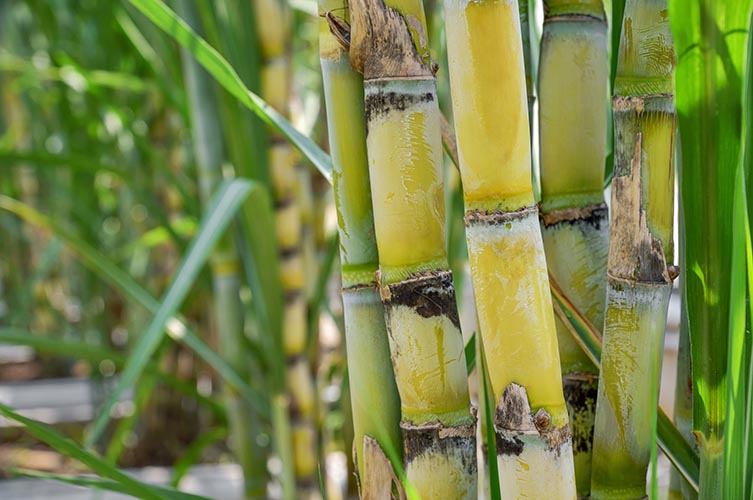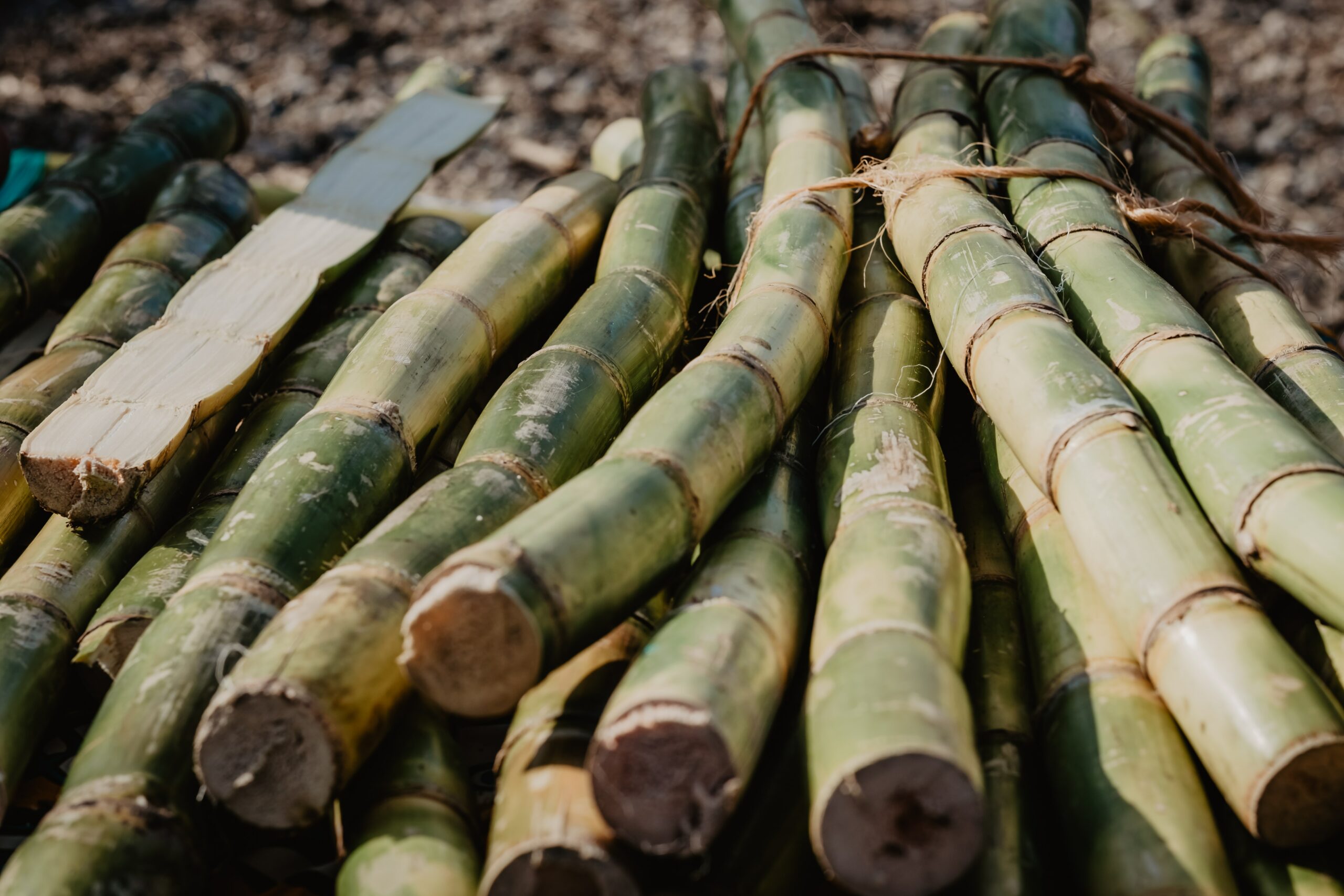Everything About Sugar Canes: What Are Sugar Canes Used For and Their Duty in Global Farming?
Sugar walking sticks act as a foundation of worldwide agriculture, mainly recognized for their duty in sugar production. They also add to the creation of spin-offs like molasses and ethanol. These elements not just support numerous sectors yet likewise influence financial stability in rural areas. The growing of sugar canes faces substantial environmental obstacles. Understanding their complex role triggers more exploration into their agricultural practices and sustainability initiatives.
The Agricultural Refine of Sugar Cane Cultivation
Sugar cane cultivation might differ by region, the basic farming process remains regular. The very first action involves picking high-yielding varieties suitable for regional climates. Prep work of the soil is important, typically calling for tillage and the enhancement of plant foods to improve fertility. Growing commonly happens during the stormy period, with farmers utilizing either entire stalks or cuttings to establish brand-new crops.As the plants grow, they need diligent care, consisting of weed control, parasite management, and irrigation, relying on the environmental conditions. Farmers keep track of the sugar cane's development cycle, which normally extends 10 to 24 months, before harvesting. Collecting is labor-intensive, commonly conducted manually or with specialized machinery, guaranteeing marginal damage to the stalks. Following harvest, the walking cane is transported to processing centers. This precise growing process not just supports local economic climates yet also plays a significant function in worldwide farming methods, contributing to food and power supplies.
Sugar Manufacturing: From Walking Cane to Crystal
The trip of sugar manufacturing begins the moment fresh collected sugar walking stick comes to processing centers. The first step includes slicing the walking stick and cleaning to prepare it for extraction. Using high-pressure rollers, the juice is removed from the crushed walking stick, leading to a wonderful fluid referred to as sugarcane juice. This juice undergoes explanation, where pollutants are eliminated through the addition of lime and heat.Next, the clarified juice is concentrated by steaming it down to create a thick syrup. This syrup is then taken shape by cooling, allowing sugar crystals to create. The crystallized sugar is divided from the remaining syrup, referred to as molasses, through centrifugation.Finally, the sugar crystals are washed and dried, causing the familiar granulated sugar (What Are Sugar Canes Used For). This procedure transforms raw sugar walking cane into a product that is indispensable to different cooking and commercial applications, highlighting the importance of sugar in worldwide agriculture
Biofuels and Sugar Canes: A Sustainable Future
As the world significantly seeks lasting power options, sugar walking sticks have emerged as a promising source for biofuels. The biomass stemmed from sugar walking sticks can be exchanged ethanol, a renewable gas alternative that substantially reduces greenhouse gas emissions contrasted to nonrenewable fuel sources. This process not just offers a cleaner energy resource but also promotes energy freedom for many countries.In addition, sugar walking stick growing sustains country economic situations by developing jobs in both farming and biofuel manufacturing markets. Using sugar canes for biofuel production additionally urges farming diversity, which can enhance dirt wellness and lower reliance on solitary crops. Furthermore, the spin-offs of sugar cane handling can be utilized for electrical power generation, furthermore adding to a lasting energy cycle. As countries undertaking to meet renewable energy targets, sugar walking canes are poised to play an essential function in forming a much more sustainable future in the biofuel landscape.

The Function of Sugar Canes in Beverage Production
Sugar canes play a significant role in beverage manufacturing, working as a key component in rum and contributing to the sweetness of lots of sodas. Furthermore, their natural juices are made use of in various beverages, boosting flavor and charm. This flexibility highlights the value of sugar walking canes in the global beverage sector.
Sugar Cane in Rum
Rum production is delicately connected to the farming of sugar cane, a crucial plant that supplies the necessary fermentable sugars required for fermentation. This procedure starts with the removal of juice from collected sugar walking canes, which is then either fermented straight or refined into molasses. Yeast is included to convert the sugars into alcohol, resulting in a diverse variety of rum styles, from light to dark varieties. The geographical region where the sugar walking cane is expanded significantly affects the flavor account of the rum, with elements such as soil kind and climate having fun critical roles. Countries like Barbados, Jamaica, and Cuba are renowned for their rum manufacturing, mirroring the historical and social value of sugar walking cane within the international drink sector.
Soft Drinks Sugar Resource

All-natural Juice Production Utilizes
Along with its significant role in soft beverage manufacturing, sugar cane is likewise essential in the natural juice market. The juice drawn out from sugar walking stick, called walking stick juice, is commemorated for its natural sweet taste and one-of-a-kind taste account. This juice is commonly taken in fresh in different regions, specifically in exotic nations, where it is enjoyed as a revitalizing drink. In addition, cane juice acts as a base ingredient in a variety of natural fruit juices and healthy smoothies, enhancing both taste and article nutritional value. Its all-natural residential or commercial properties make it an eye-catching alternative to sweetening agents, attracting health-conscious customers. In general, sugar cane's flexibility in juice manufacturing underscores its relevance in modern beverage offerings worldwide.
Innovations in Sugar Walking Stick Byproducts
Innovations in sugar walking stick results are leading the way for sustainable remedies in numerous markets. Biofuels originated from sugar walking cane offer a different power resource, while developments in lasting packaging are decreasing reliance on standard products. These growths highlight the adaptability and potential of sugar cane beyond its primary usage in beverage manufacturing.
Biofuels From Sugar Cane
How can the by-products of sugar walking stick add to lasting energy solutions? The conversion of sugar walking stick right into biofuels presents an appealing avenue for sustainable energy. By utilizing the fibrous residue, known as bagasse, producers can generate bioethanol via fermentation processes. This bioethanol can serve as a lasting alternative to nonrenewable fuel sources, decreasing greenhouse gas exhausts and dependence on non-renewable sources. Furthermore, molasses, one more result, can be fermented to create biofuels, maximizing resource performance. The energy created from sugar cane not only offers a cleaner gas resource but additionally boosts the overall financial practicality of sugar production. By integrating biofuel production into their operations, sugar walking cane markets can play a vital function ahead of time lasting power remedies globally.
Lasting Packaging Solutions
Sustainable product packaging options are significantly being established from sugar walking cane by-products, showcasing the flexibility of this agricultural staple. Advancements such as naturally degradable plastics stemmed from bagasse, the fibrous deposit left after juice removal, are obtaining traction. These materials use an eco-friendly alternative to typical plastics, lowering dependence on fossil fuels and decreasing carbon impacts. In addition, sugar cane-based product packaging is compostable, breaking down naturally without harming the atmosphere. Business are currently checking out these options to straighten with consumer need for sustainability. As recognition of plastic air pollution grows, the fostering of sugar cane-derived packaging is anticipated to climb, placing sugar walking sticks as a principal in the change to greener packaging services in numerous sectors.
Economic Influence of Sugar Cane Farming

Although sugar cane farming has deep roots in several economic climates, its financial effect prolongs far beyond agricultural production. This plant offers as a considerable income for numerous farmers worldwide, particularly in developing nations where agriculture is a key resources. Sugar walking cane adds to neighborhood economic climates through work development in harvesting, processing, and growing. The market also stimulates development in relevant sectors such as transportation, tools manufacturing, and food processing.Furthermore, sugar walking stick is a principal in worldwide trade, influencing global markets and rates. Nations that generate sugar walking cane typically count on exports to improve their financial security. The byproducts of sugar walking stick, such as ethanol and molasses, diversify income streams for farmers and include worth to the agricultural sector. In general, the financial implications of sugar walking stick farming are extensive, affecting not only farmers however additionally entire neighborhoods and national economic situations.
Ecological Considerations in Sugar Cane Cultivation
While sugar walking cane farming plays a necessary role in lots of economic situations, visit here it also increases significant ecological problems that can not be neglected. The comprehensive use of plant foods and chemicals in sugar walking cane growing often causes soil deterioration and water air pollution. Drainage from these chemicals can infect nearby water bodies, hurting marine environments. Furthermore, the monoculture techniques prevalent in sugar walking cane farming decrease biodiversity, making ecological communities much more at risk to insects and diseases.Deforestation is one more critical problem, as land is frequently cleared to make method for sugar plantations, resulting in environment loss for wildlife and enhanced carbon discharges. In addition, the high water intake required for sugar walking stick irrigation can strain local water sources, especially in deserts. As worldwide demand for sugar remains to rise, attending to these environmental obstacles becomes necessary to ensure sustainable practices in sugar walking stick farming.
Often Asked Inquiries
What Are the Nutritional Advantages of Sugar Cane?
The dietary benefits of sugar walking cane largely include its high carb material, giving energy. Additionally, it has vitamins, minerals, and antioxidants that may sustain overall wellness, though small amounts is crucial because of its sugar web content.
Just How Does Sugar Walking Cane Affect Citizen Ecosystems?
Sugar walking stick growing can considerably impact local communities by modifying land usage, impacting biodiversity, and requiring considerable water sources. Furthermore, it might lead to soil degradation and chemical runoff, disrupting bordering environments and wildlife populaces.
What Is the History of Sugar Walking Cane Cultivation?

Are There Alternatives to Sugar Walking Stick for Sugar Manufacturing?
Alternatives to sugar walking cane for sugar production include sugar beetroots, corn, and numerous tropical plants like sorghum and agave (What Are Sugar Canes Used For). These crops use diverse resources of sweet taste, each with unique farming needs and ecological impacts
Exactly How Do Weather Condition Patterns Impact Sugar Cane Yields?
Climate patterns greatly affect sugar walking stick yields via temperature level fluctuations, rainfall quantities, and seasonal cycles. Drought or extreme rains can prevent development, while perfect conditions enhance photosynthesis, ultimately affecting the quantity and top Home Page quality of the harvest. The journey of sugar manufacturing starts the minute fresh gathered sugar walking stick shows up at processing facilities. The crystallized sugar is separated from the remaining syrup, known as molasses, with centrifugation.Finally, the sugar crystals are cleaned and dried, resulting in the acquainted granulated sugar. Rum manufacturing is delicately linked to the farming of sugar cane, a crucial crop that supplies the essential fermentable sugars required for fermentation. Furthermore, the monoculture practices common in sugar walking cane farming decrease biodiversity, making environments much more prone to bugs and diseases.Deforestation is an additional important problem, as land is usually removed to make way for sugar ranches, leading to environment loss for wild animals and boosted carbon emissions. Alternatives to sugar cane for sugar production include sugar beetroots, corn, and various exotic plants like sorghum and agave.
Comments on “What Are Sugar Canes Used For in Local Trade and Community Markets”